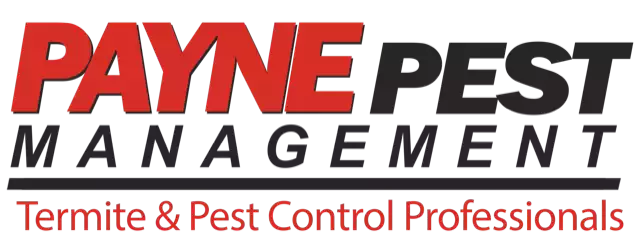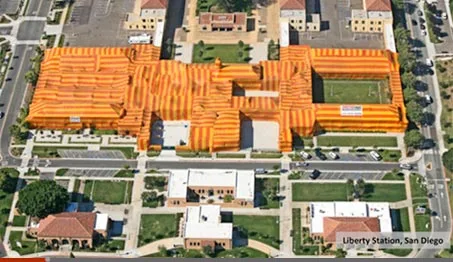Preventing drywood termites is essential to protecting your property. Here are some tips to prevent drywood termites from infesting your home:
1. Seal Cracks and Gaps
Seal any cracks and gaps in your home’s foundation, walls, and roof to prevent drywood termites from entering your home. Pay attention to areas where pipes and wires enter your home, as these are common entry points for drywood termites.
2. Reduce Moisture
Drywood termites thrive in moist environments, so reducing moisture in and around your home is crucial. Fix any leaks in pipes or roofs and ensure proper ventilation in crawl spaces and attics.
3. Store Wood Properly
Store firewood and other wooden materials away from your home and at least a few inches off the ground. This will prevent drywood termites from infesting the wood and spreading to your home.
4. Regular Inspections
Regularly inspect your home for signs of drywood termites. Catching an infestation early can save you time, money, and damage to your property.
Treating Drywood Termites
If you suspect that your home has been infested by drywood termites, it is essential to take action quickly to prevent further damage. Here are some treatment options for drywood termites:
1. Fumigation
Fumigation is the most effective way to treat a severe drywood termite infestation. This process involves covering your home with a tent and using gas to kill the termites. Fumigation is a dangerous process that should only be done by a licensed professional.
2. Heat Treatment
Heat treatment involves using high temperatures to kill drywood termites. This process is effective, but it can be costly and time-consuming.
3. Chemical Treatment
Chemical treatment involves using insecticides to kill drywood termites. This process is effective, but it may require multiple treatments and can be harmful to the environment.
Professional Termite Inspection Services
Professional termite inspection services can help identify drywood termite infestations in your home. A licensed professional can inspect your home and provide treatment options if necessary. It is recommended to have a termite inspection performed annually to prevent infestations.
DIY Termite Inspection Tips
Here are some DIY termite inspection tips to help identify drywood termites in your home:
1. Check for Swarms
Look for swarms of drywood termites around your home, especially near wooden structures.
2. Inspect Wooden Structures
Regularly inspect wooden structures in and around your home for signs of termite damage, including small holes, tunnels, and frass.
3. Use a Flashlight
Use a flashlight to inspect hard-to-reach areas, such as crawl spaces and attics.
4. Tap the Wood
Tap on wooden structures and listen for a hollow sound, which may indicate a termite infestation.
Common Misconceptions about Drywood Termites
There are several misconceptions about drywood termites that are important to dispel:
1. Drywood Termites Need Soil
Drywood termites do not need soil to survive. They can live and infest wooden structures without contact with the ground.
2. Only Old Homes are Infested
Drywood termites can infest any wooden structure, regardless of age.
3. DIY Treatments are Effective
DIY termite treatments can be harmful and are often not effective in treating severe infestations. It is recommended to seek professional treatment for drywood termites.Drywood termites can cause significant damage to your home if left untreated. It is essential to be aware of the signs of a drywood termite infestation and take preventative measures to protect your property.
If you suspect that your home has been infested by drywood termites, it is important to act quickly and seek professional treatment. Fumigation, heat treatment, and chemical treatment are effective ways to treat drywood termites, but it is essential to have a licensed professional perform the treatment.
Regular termite inspections can help identify drywood termite infestations before they cause significant damage. DIY termite inspection tips can also be helpful in identifying drywood termites in your home, but it is recommended to have a licensed professional perform a termite inspection annually.
Remember to seal any cracks and gaps in your home, reduce moisture, and store wood properly to prevent drywood termite infestations. By taking preventative measures and being aware of the signs of a drywood termite infestation, you can protect your home from damage and costly repairs.
FAQs
- What are the signs of drywood termites in Palm Springs? Some signs of drywood termites in Palm Springs include discarded wings, small holes in wooden structures, and frass (termite droppings).
- How do I prevent drywood termites from infesting my home? To prevent drywood termites from infesting your home, seal any cracks and gaps in your home, reduce moisture, store wood properly, and have regular termite inspections.
- Are DIY termite treatments effective? DIY termite treatments can be harmful and are often not effective in treating severe infestations. It is recommended to seek professional treatment for drywood termites.
- What should I do if I suspect that my home has been infested by drywood termites? If you suspect that your home has been infested by drywood termites, it is important to act quickly and seek professional treatment.
- Can drywood termites infest any wooden structure? Yes, drywood termites can infest any wooden structure, regardless of age.







